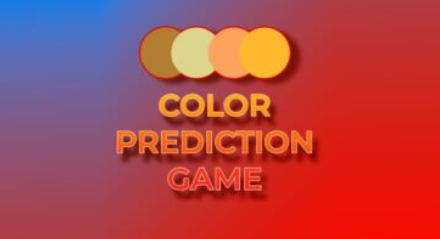
Color prediction games have evolved beyond simple pastimes, embracing technological advancements that propel them into the realms of innovation and sophistication. “Predicting Progress” explores the dynamic intersection of technology and color prediction games, unraveling the transformative impact of advancements that enhance game play, user experience, and the overall trajectory of this captivating genre.
Augmented Reality (AR) Revolution:
Augmented Reality (AR) has emerged as a revolutionary force in the landscape of color prediction games. Integrating virtual elements into the real-world environment, AR technology transforms the gaming experience. Players witness predictions come to life in their surroundings, blurring the lines between the virtual and tangible. This immersive approach elevates the overall engagement, providing a novel and visually captivating dimension to color prediction games on 91-clubin.in.
Machine Learning and Predictive Algorithms:
The integration of machine learning and predictive algorithms has redefined the predictive mechanics within color games. Developers leverage advanced algorithms to create dynamic and adaptable game play experiences. These algorithms analyze player patterns, adapt difficulty levels in real-time, and introduce evolving challenges. The result is a more personalized and engaging predictive journey, where the game learns and evolves alongside the player.
Real-Time Data Processing:
The speed of prediction is a critical element in color games, and real-time data processing capabilities have become instrumental in achieving seamless game play. Advanced data processing technologies ensure that predictions are processed instantly, allowing players to experience the thrill of real-time outcomes. This technological enhancement minimizes latency, creating a more responsive and immersive gaming environment.
Enhanced Visuals with High-Resolution Graphics:
Technological advancements in graphics processing have ushered in an era of stunning visuals and high-resolution graphics in color prediction games. Developers harness the power of modern GPUs to create visually captivating environments, vibrant color schemes, and intricate details. Enhanced visuals not only contribute to the aesthetic appeal but also provide a more immersive and enjoyable gaming experience for players.
Cross-Platform Integration:
The advent of cross-platform integration has transformed the accessibility of color prediction games. Players can seamlessly transition between different devices, from smartphones to tablets and desktops, without losing progress. This technological synergy fosters a unified gaming experience, allowing users to engage with their favorite color prediction games across diverse platforms, enhancing convenience and connectivity.
Blockchain Technology for Security and Transparency:
Blockchain technology has found its way into the world of color prediction games, addressing issues of security and transparency. Incorporating blockchain ensures secure transactions, protects user data, and provides a transparent record of in-game activities. This technological safeguard enhances player confidence, fostering trust in the gaming ecosystem and promoting a secure environment for predictive endeavors.
Gesture and Voice Recognition:
Gesture and voice recognition technologies have added layers of interactivity to color prediction games. Players can now make predictions, navigate through interfaces, or trigger in-game actions using gestures or voice commands. This hands-free approach enhances user engagement and provides a more intuitive and dynamic way for players to interact with the predictive elements of the game.
Dynamic Storytelling and Narrative AI:
Advancements in Artificial Intelligence (AI) have enabled dynamic storytelling within color prediction games. Narrative AI systems adapt storylines based on player choices and predictions, creating personalized and evolving narratives. This interactive storytelling approach adds depth to the gaming experience, making predictions not only a game play mechanic but a catalyst for shaping the unfolding narrative.
Cloud Gaming for Seamless Accessibility:
Cloud gaming services have revolutionized the accessibility of color prediction games, allowing players to stream games directly from the cloud. This technology eliminates the need for high-end hardware, enabling users to enjoy immersive color prediction experiences on a variety of devices. The seamless accessibility offered by cloud gaming expands the reach of color prediction games to a broader audience.
Biometric Integration for Enhanced Immersion:
Biometric integration, including features like heart rate monitoring and facial recognition, adds a layer of emotional intelligence to color prediction games. Developers use biometric data to adapt game play based on the player’s emotional state, creating a more personalized and emotionally resonant experience. This technological integration enhances immersion, making predictions not only a cognitive challenge but an emotionally connected journey.
Conclusion:
The technological advancements in color prediction games have propelled the genre into a new era of innovation and sophistication. From the immersive possibilities of augmented reality to the power of machine learning algorithms and high-resolution graphics, each advancement contributes to a more engaging and dynamic predictive experience. As technology continues to evolve, the future of color prediction games holds the promise of even more groundbreaking advancements, shaping a landscape where the thrill of predicting progress is intricately woven into the fabric of cutting-edge gaming experiences.
Top of Form



